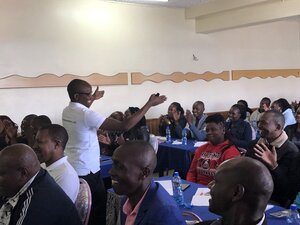Course Overview
You can express a variety of emotions and reactions to others through your body language, which is a potent type of non-verbal communication. Human body language can be relatively universal, unlike verbal and written communication, which will vary from country to country and region to area. Therefore, developing appropriate body language reading skills can help you improve relationships, especially in cross-cultural settings. To improve your communication skills, enroll in a body language training course from Advanced Learning Programs right away.
You will have a thorough understanding of the many types of body language and its implications thanks to this course. Additionally, you’ll learn about posture, handshakes, eye motions, mirroring, gender differences, and much more.
Anyone’s profession will benefit from being able to read body language. Body language is a potent, subconscious kind of communication that can be improved with practice, just like any other form of communication. Understanding other people’s body language and being fully aware of what your own body is saying are crucial skills for anyone working in sales or management.
This fascinating professional development training course will show you the ins and outs of reading body language, hand gestures, and facial expressions to decipher what people are truly thinking and experiencing. Cultural differences must also be taken into account since some cultures have gesturing that is very vivacious and untamed while others are quite solemn and quiet.



Course Objectives
- Recognize the variety of nonverbal cues that make up “body language”
- Recognize the subtleties in handshakes and touch
- Recognize how your style affects your body language.
- Match words to body language and be able to read facial expressions
- Recognize common gestures
- Recognize eye contact
- Recognize power positions
- Be aware of phony smiles and telltale signs of deception, and be aware of cultural variations in body language.
Management & Supervisory Training Highlights
Training Feedback
Happy Customers
Course Outline
Lesson 1: Meet the ICS Family
- Discover the Family
- Proxemics, Mr.
- Madame Haptics
- Family Vocalists
- Father Chronemics
- Father of kinetics
- Reflection
Lesson 2: Aligning With Who You Want To Be
- Communication, both verbal and nonverbal
- Common Gestures for Body Language and Emotion
Lesson 3: Reflection on the Body
- The Soul’s Windows
- The power of what you say with your mouth is in your hands.
- Taking a Position
Lesson 4: Please Sit Down, Body Language in Business
- Building rapport during negotiation Body Language Observations
Lesson 5: Enlightening the Art of Deception
- Common Hand gestures for Lying and Other Deceitful Qualities
Lesson 6: Body Languages Across Cultures
- Cultural Differences in Behaviour
- Audience Expectations and Listening Patterns
- Certain things are universal, while others are not.
Lesson 7: Create Reflections
- Accountability = Action
Course Outcomes
- Recognize the variety of nonverbal cues that make up “body language.”
- Recognize the subtleties in handshakes and touch
- Recognize how your style affects your body language.
- Compare verbal and nonverbal cues
- Recognize and interpret facial expressions
- Recognize common gestures
- Recognize eye contact
- Recognize power positions
- Understanding the telltale signs of a phony grin and lying
- Recognize how other cultures’ body language differs from one another.
Who Should Attend
- Senior marketing directors or managers
- Relationship managers and
- Customer relationship managers
- Professionals in customer service, supervisors,
- Team leaders, and managers
- Sales experts, salespeople, and sales analysts
- Entrepreneurs and founders of startups
Trainers Available for:
- In-House Trainings
- Online Training
- 2 Hours Crush Program
- Half Day Program
- One Day Program
- Two Days Full Program
Training Techniques
- Power point Presentations
- Engaging conversations
- Case studies
- Exercises in solving problems
- Focus Group Conversations
- Games in Management
- Skits and modeling the part
Request a Quote

